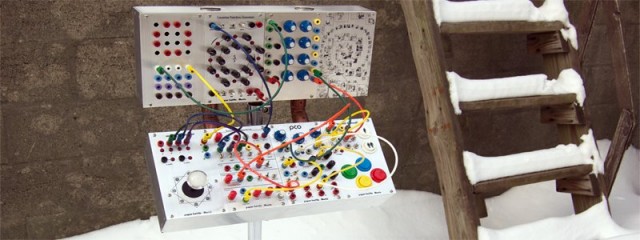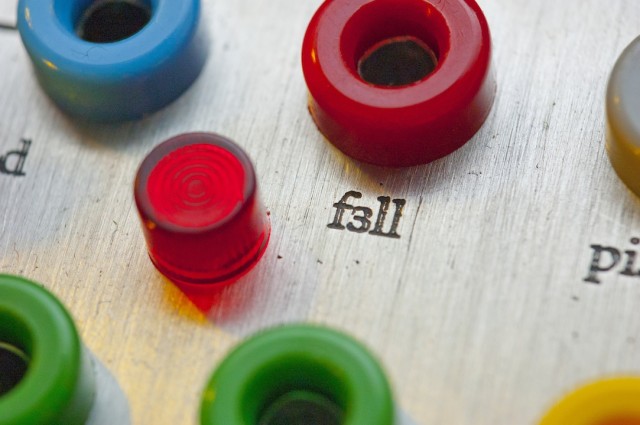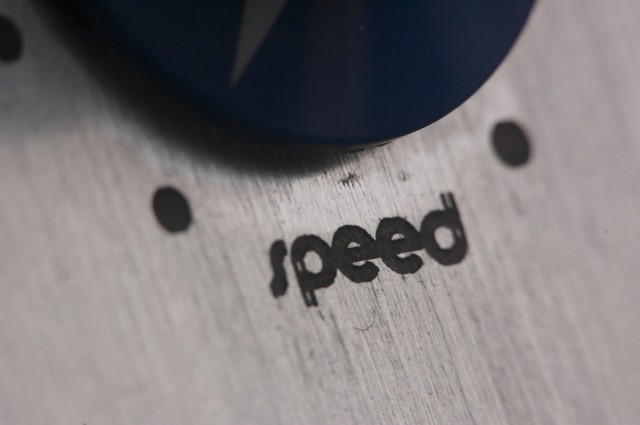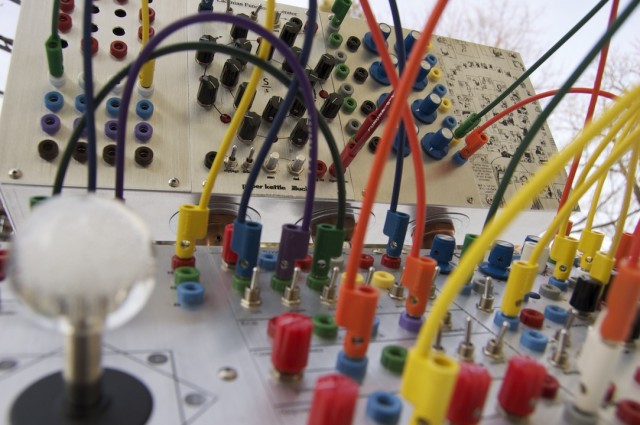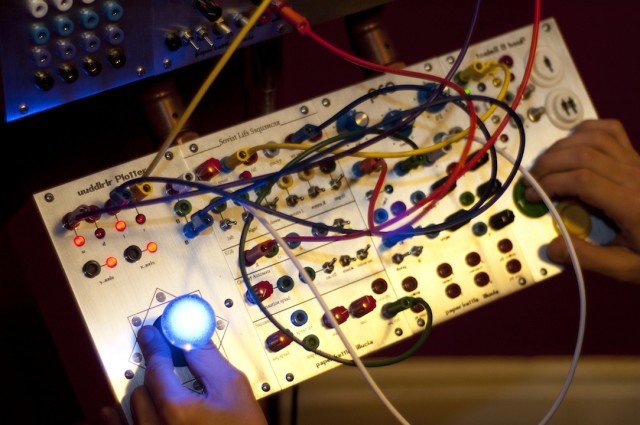illucia is a project at the intersection of lots of forms of goodness and imagination. The physical interface – what you see first in the image and video here – is a DIY modular controller, complete with Buchla-style patch cords and arcade buttons and pretty knobs. But while that might lead you to believe we’re in analog synthesis land, the physical controls are just a tangible cockpit for what the artist calls “code-bending.” Connect the USB controller to software, and it modifies audiovisual games in modular, interactive fashion.
Since you probably don’t have this particular physical controller lying about your home, you can also use these games directly with whatever software or hardware interface you like, thanks to OpenSoundControl (OSC) interfacing.
The result: free, Creative-Commons licensed audiovisual “playgrounds.” The video at top is just a teaser, but there’s more to come, says creator Chris Novello. Chris tells CDM:
In a quick sentence: I make games that can play other games, and I’ve designed a physical console to interact with them.
The vimeo video’s accompanying text offers some explanation, but here is some extra info as well:
“Codebending?”
Codebending is the mutant daughter of live coding, circuit bending, and modular synthesizers. It gives software “patch points,” and allows for connections between otherwise-unrelated computer programs. Anything can control anything, and computer software tropes collapse into strange generative art. In terms of implementation, these patch points are really just OSC addresses, which allow for easy transmission between programs. http://www.paperkettle.com/codebending has more general information on codebending.“Instrument?”
illucia is a physical instrument for making these connections – it gives the software patch points physical counterparts, and is a real life console for routing information between programs. The act of building and breaking connections (of exploring generative emergences via patching) becomes a form of play. In terms of hardware, I use Atmega mircocontrollers to encode the state of the device (connections between jacks, knob positions, and button presses) into a tiny byte array, which then gets sent to my computer over USB. This state is used to update a software model of illucia on the computer, which determines the routing between several games / programs. I use Max/MSP a lot for rapid development of routing utilities.All of my games are written in Processing. They utilize classic arcade mechanics, but are more like modules in a modular synthesizer. I also add some twists, like:
“Soviet Life Sequencer,” which is a Tetromino step sequencer that is remixable by Conway’s Game of Life. I remember a CDM post about Conway sequencers, as well as one featuring the game Chime, but I think I’m the first person to combine Cellular Automata, falling Tetrominos, and a Step Sequencer : 0
also, “Pile of Secrets,” which is a codebendable text editor. Office software is a surprisingly fun companion to video game mechanics.
I’m in the process of releasing the first wave of info right now, but I’ve got a ton on the way as well!
For more information:
http://vimeo.com/22732435
paperkettle.com/
twitter.com/paperkettle
facebook.com/paperkettle
Chris also says he’s sending over some more images, so I’ll add those to the story.
This should start the conversation, but if you have questions, fire away and I’m sure we can get Chris to answer them!
More images (all photos courtesy Chris Novello; used by permission):
